The signage around the Tullie Smith House was better than anything I’ve seen elsewhere. So much so, that I’ve included the text from these signs with the photos below. Tours of the Tullie Smith House run daily and can be booked at the Atlanta Historical Society.
The exact date of the house remains unknown, but it was most likely constructed between 1845 and 1850. It was originally located amidst 800 acres on what is now North Druid Hills Road in Atlanta.
Tullie Smith House is typical of the southern rural home of the mid-19th century, with its exterior end chimneys, hall and parlour plan, full-width porch, and traveller’s room.
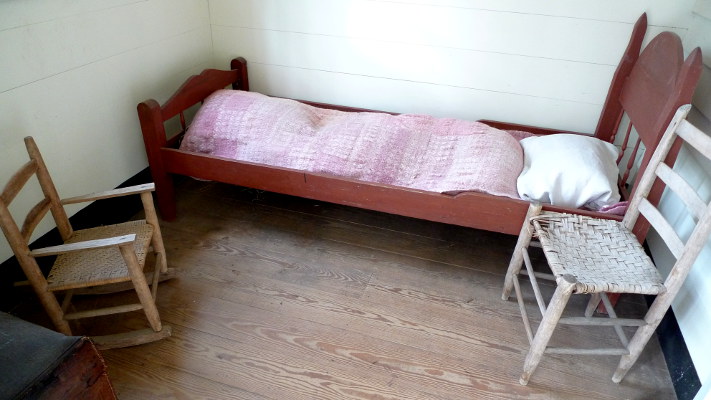
The traveller’s (or parson’s) room remained unlocked for visitors, who could enter at any time without disturbing the family.
A variety of activities, such as carding and spinning wool, weaving, preparing food, and washing would have occurred in the house and on the porch, depending upon the time of year and the family’s needs.
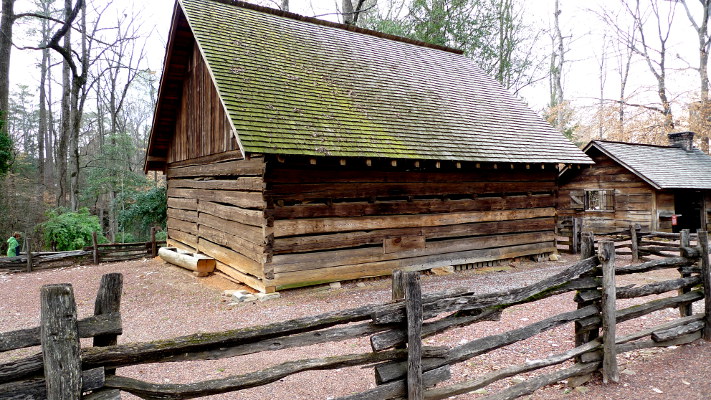
The barn is built of hand-hewn, half-dovetail logs. Farmers such as the Smiths depended on the land for their existence, so livestock protection and care were important.
In 1850, Robert H. Smith owned four horses, six milk cows, four oxen, twelve other cattle, fifteen sheep, and seventy swine. This barn houses pens and coops for our Hampshire sheep, chickens, a goat, and a rabbit.
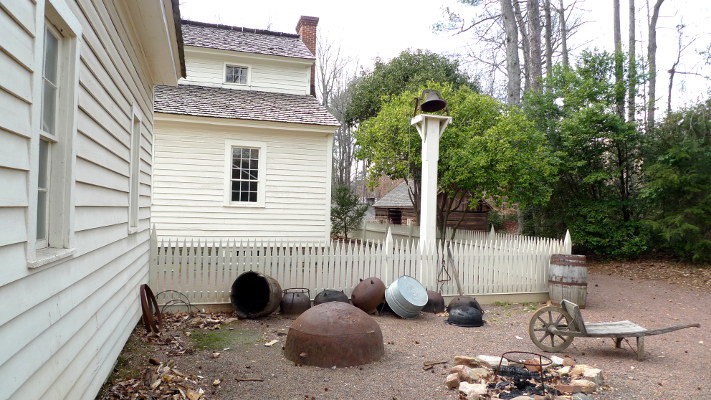
No garden form is more strongly tied to the South in the 1800s than the rural, grass-free swept yard. Probably African in origin, it suited southern needs by getting rid of hiding places for snakes, while giving families open spaces for jobs like laundry and hog butchering.
The front yard displayed colorful flowers and favorite shrubs. The women and children of the household, both white and black, where responsible for its care.
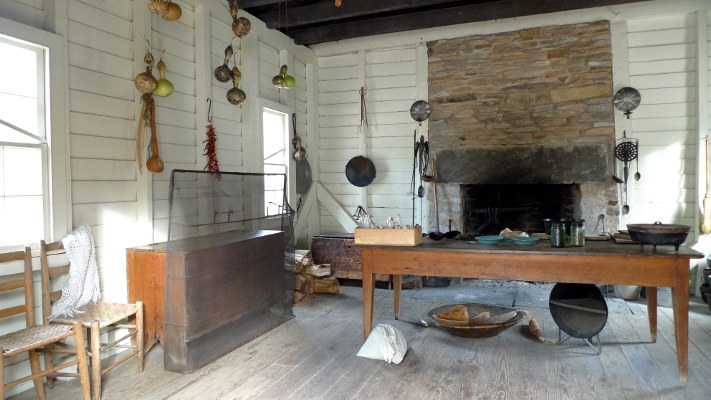
This is the original Smith family kitchen. Kitchens in the South, such as this one, were often detached from the house because of the heat and the danger of fire.
Families like the Smiths ate two large meals each day: one in the morning and one around noon. The evening meal consisted of a cold supper or leftovers. Food was cooked on the crane over the first or baked in cast-iron pots over coals on the hearth. Slaves probably did much of the cooking on the Smith farm.
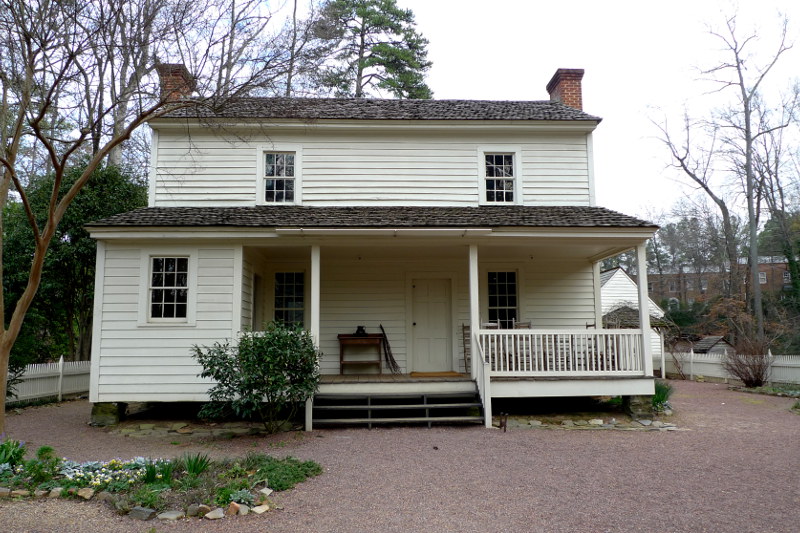
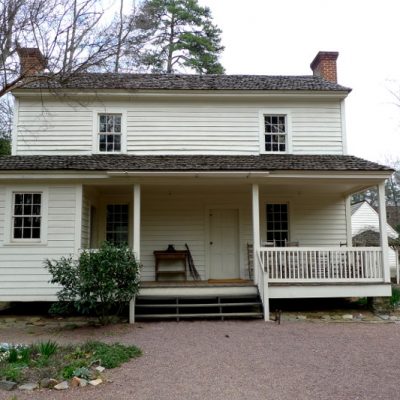
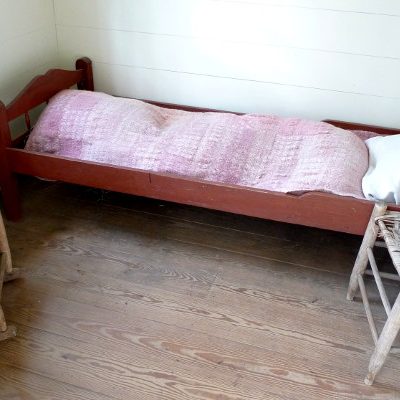
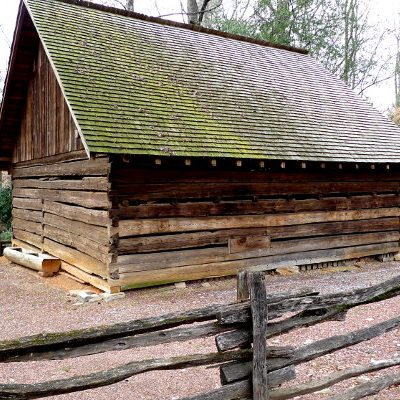
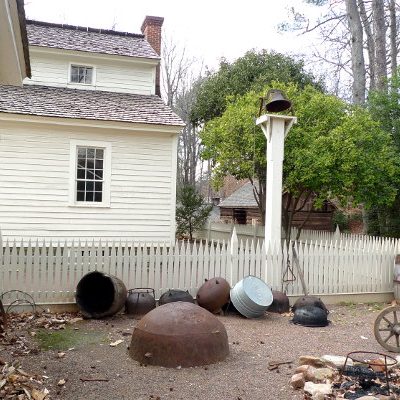
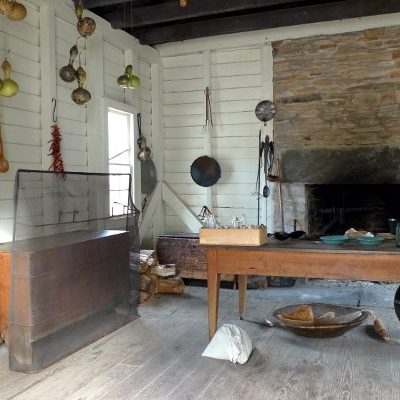
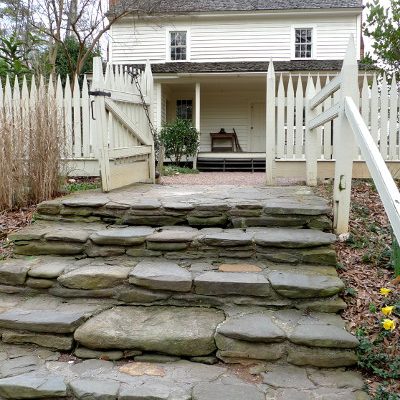
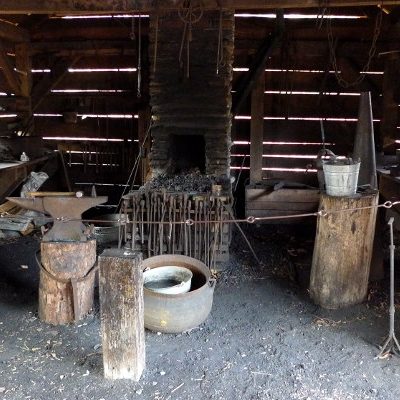
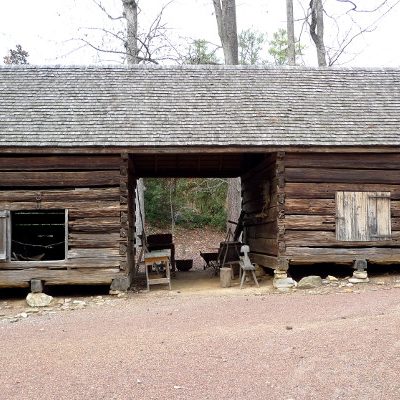
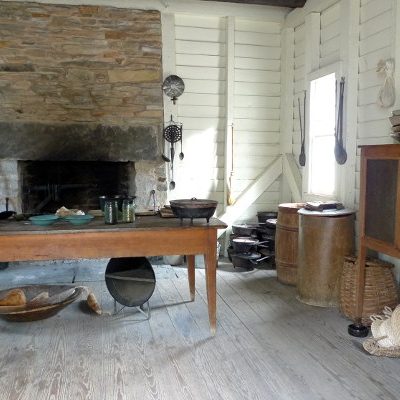
0 comments on “Tullie Smith House, Buckhead”Add yours →